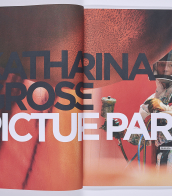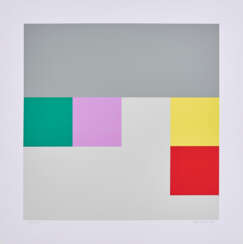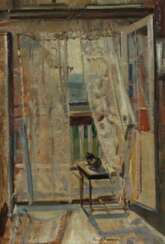грез

























Camille Graeser was a Swiss artist, interior designer, graphic designer and representative of the Zurich school of concrete art.
Camille Graeser developed abstract expressionism around 1920. He later switched to a strict, two-dimensional purism, influenced by his Stuttgart colleagues Oskar Schlemmer and Willi Baumeister. In 1933, because of the rise of the Nazis to power, Greser fled to Zurich. In 1937 he became a member of the Allianz Association of Artists, which publicly promoted the new artistic trends.


Camille Graeser was a Swiss artist, interior designer, graphic designer and representative of the Zurich school of concrete art.
Camille Graeser developed abstract expressionism around 1920. He later switched to a strict, two-dimensional purism, influenced by his Stuttgart colleagues Oskar Schlemmer and Willi Baumeister. In 1933, because of the rise of the Nazis to power, Greser fled to Zurich. In 1937 he became a member of the Allianz Association of Artists, which publicly promoted the new artistic trends.


Camille Graeser was a Swiss artist, interior designer, graphic designer and representative of the Zurich school of concrete art.
Camille Graeser developed abstract expressionism around 1920. He later switched to a strict, two-dimensional purism, influenced by his Stuttgart colleagues Oskar Schlemmer and Willi Baumeister. In 1933, because of the rise of the Nazis to power, Greser fled to Zurich. In 1937 he became a member of the Allianz Association of Artists, which publicly promoted the new artistic trends.


Camille Graeser was a Swiss artist, interior designer, graphic designer and representative of the Zurich school of concrete art.
Camille Graeser developed abstract expressionism around 1920. He later switched to a strict, two-dimensional purism, influenced by his Stuttgart colleagues Oskar Schlemmer and Willi Baumeister. In 1933, because of the rise of the Nazis to power, Greser fled to Zurich. In 1937 he became a member of the Allianz Association of Artists, which publicly promoted the new artistic trends.


Camille Graeser was a Swiss artist, interior designer, graphic designer and representative of the Zurich school of concrete art.
Camille Graeser developed abstract expressionism around 1920. He later switched to a strict, two-dimensional purism, influenced by his Stuttgart colleagues Oskar Schlemmer and Willi Baumeister. In 1933, because of the rise of the Nazis to power, Greser fled to Zurich. In 1937 he became a member of the Allianz Association of Artists, which publicly promoted the new artistic trends.


Camille Graeser was a Swiss artist, interior designer, graphic designer and representative of the Zurich school of concrete art.
Camille Graeser developed abstract expressionism around 1920. He later switched to a strict, two-dimensional purism, influenced by his Stuttgart colleagues Oskar Schlemmer and Willi Baumeister. In 1933, because of the rise of the Nazis to power, Greser fled to Zurich. In 1937 he became a member of the Allianz Association of Artists, which publicly promoted the new artistic trends.


Camille Graeser was a Swiss artist, interior designer, graphic designer and representative of the Zurich school of concrete art.
Camille Graeser developed abstract expressionism around 1920. He later switched to a strict, two-dimensional purism, influenced by his Stuttgart colleagues Oskar Schlemmer and Willi Baumeister. In 1933, because of the rise of the Nazis to power, Greser fled to Zurich. In 1937 he became a member of the Allianz Association of Artists, which publicly promoted the new artistic trends.


Camille Graeser was a Swiss artist, interior designer, graphic designer and representative of the Zurich school of concrete art.
Camille Graeser developed abstract expressionism around 1920. He later switched to a strict, two-dimensional purism, influenced by his Stuttgart colleagues Oskar Schlemmer and Willi Baumeister. In 1933, because of the rise of the Nazis to power, Greser fled to Zurich. In 1937 he became a member of the Allianz Association of Artists, which publicly promoted the new artistic trends.






Camille Graeser was a Swiss artist, interior designer, graphic designer and representative of the Zurich school of concrete art.
Camille Graeser developed abstract expressionism around 1920. He later switched to a strict, two-dimensional purism, influenced by his Stuttgart colleagues Oskar Schlemmer and Willi Baumeister. In 1933, because of the rise of the Nazis to power, Greser fled to Zurich. In 1937 he became a member of the Allianz Association of Artists, which publicly promoted the new artistic trends.


Camille Graeser was a Swiss artist, interior designer, graphic designer and representative of the Zurich school of concrete art.
Camille Graeser developed abstract expressionism around 1920. He later switched to a strict, two-dimensional purism, influenced by his Stuttgart colleagues Oskar Schlemmer and Willi Baumeister. In 1933, because of the rise of the Nazis to power, Greser fled to Zurich. In 1937 he became a member of the Allianz Association of Artists, which publicly promoted the new artistic trends.


Camille Graeser was a Swiss artist, interior designer, graphic designer and representative of the Zurich school of concrete art.
Camille Graeser developed abstract expressionism around 1920. He later switched to a strict, two-dimensional purism, influenced by his Stuttgart colleagues Oskar Schlemmer and Willi Baumeister. In 1933, because of the rise of the Nazis to power, Greser fled to Zurich. In 1937 he became a member of the Allianz Association of Artists, which publicly promoted the new artistic trends.


Camille Graeser was a Swiss artist, interior designer, graphic designer and representative of the Zurich school of concrete art.
Camille Graeser developed abstract expressionism around 1920. He later switched to a strict, two-dimensional purism, influenced by his Stuttgart colleagues Oskar Schlemmer and Willi Baumeister. In 1933, because of the rise of the Nazis to power, Greser fled to Zurich. In 1937 he became a member of the Allianz Association of Artists, which publicly promoted the new artistic trends.

































































